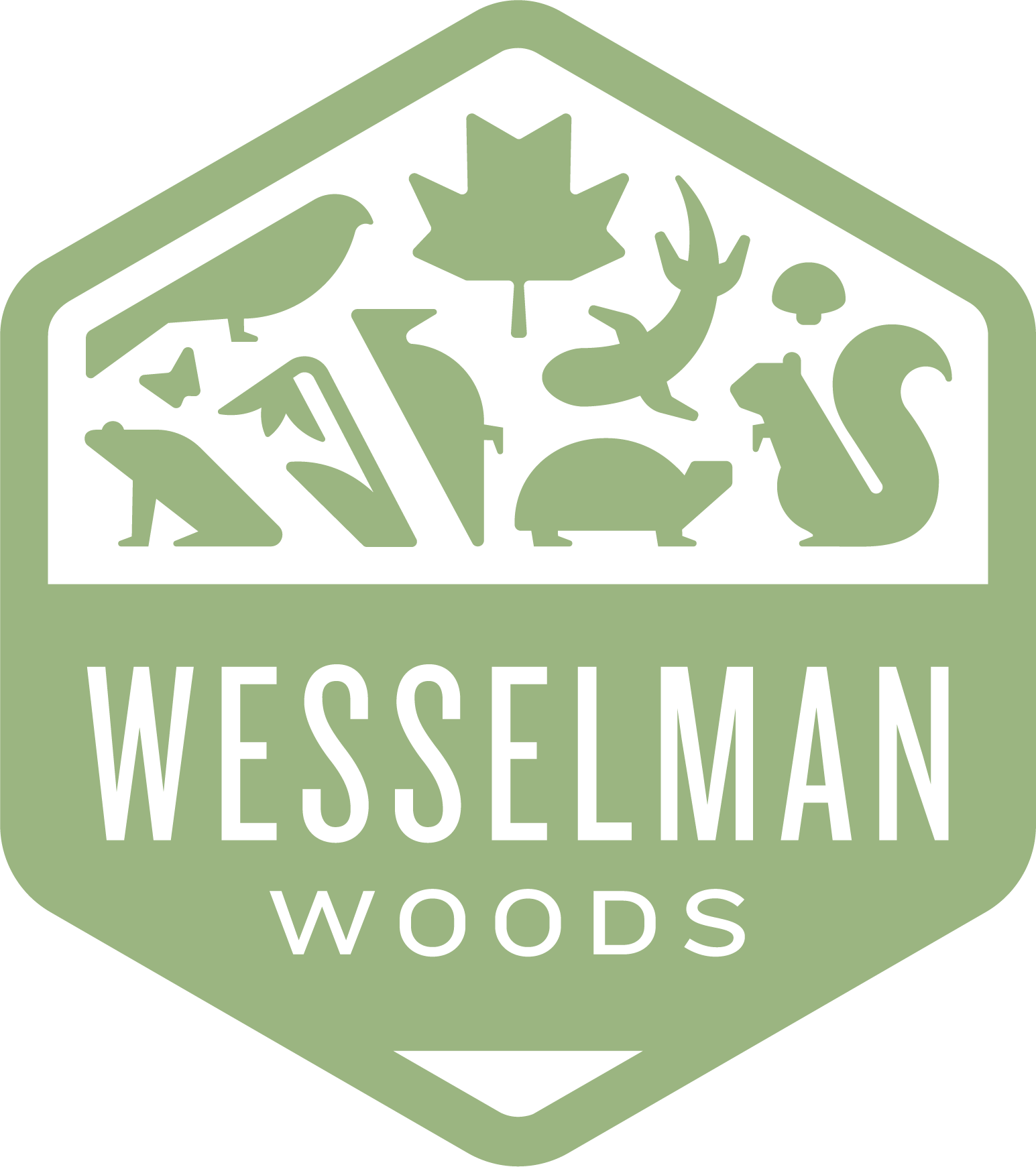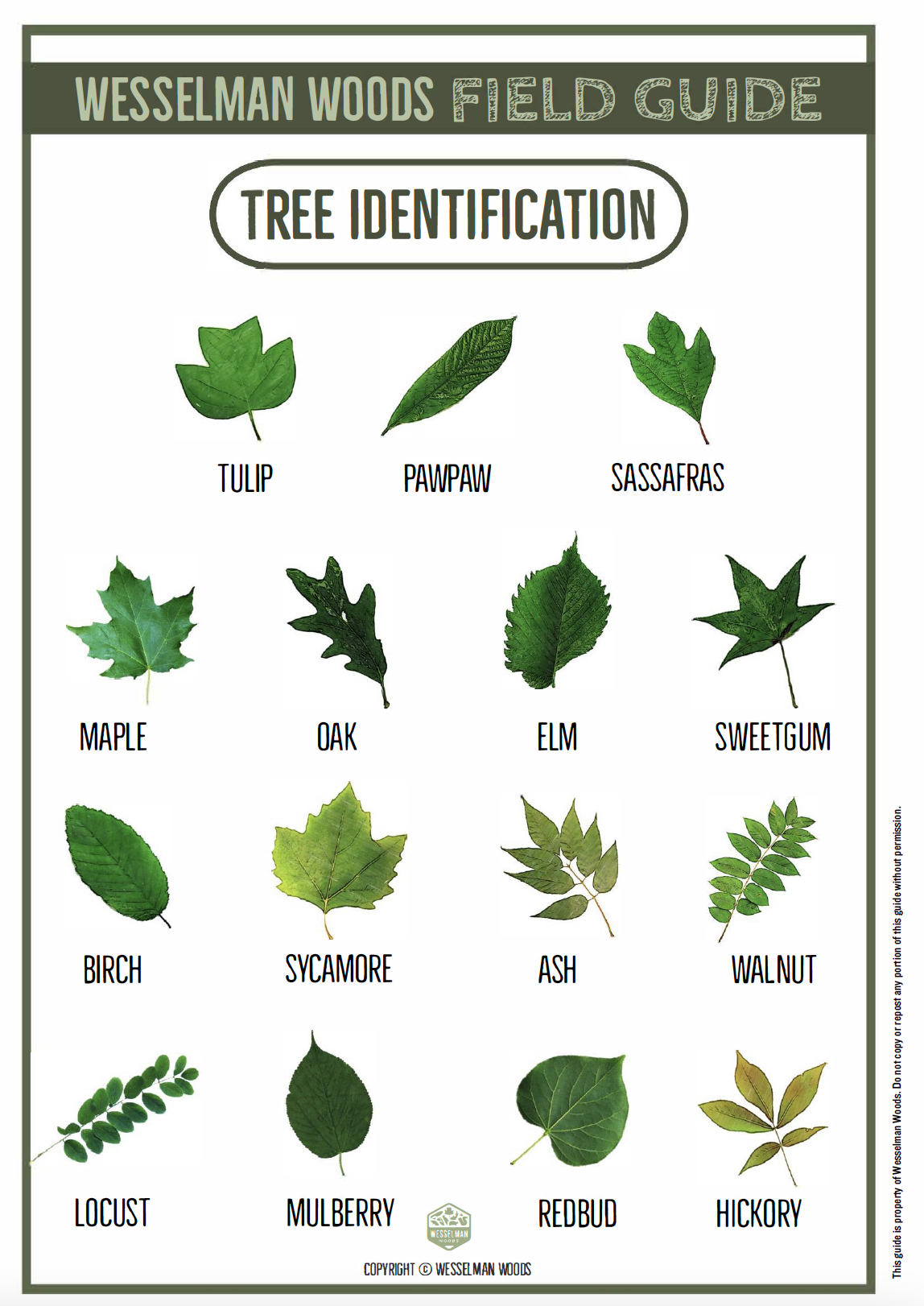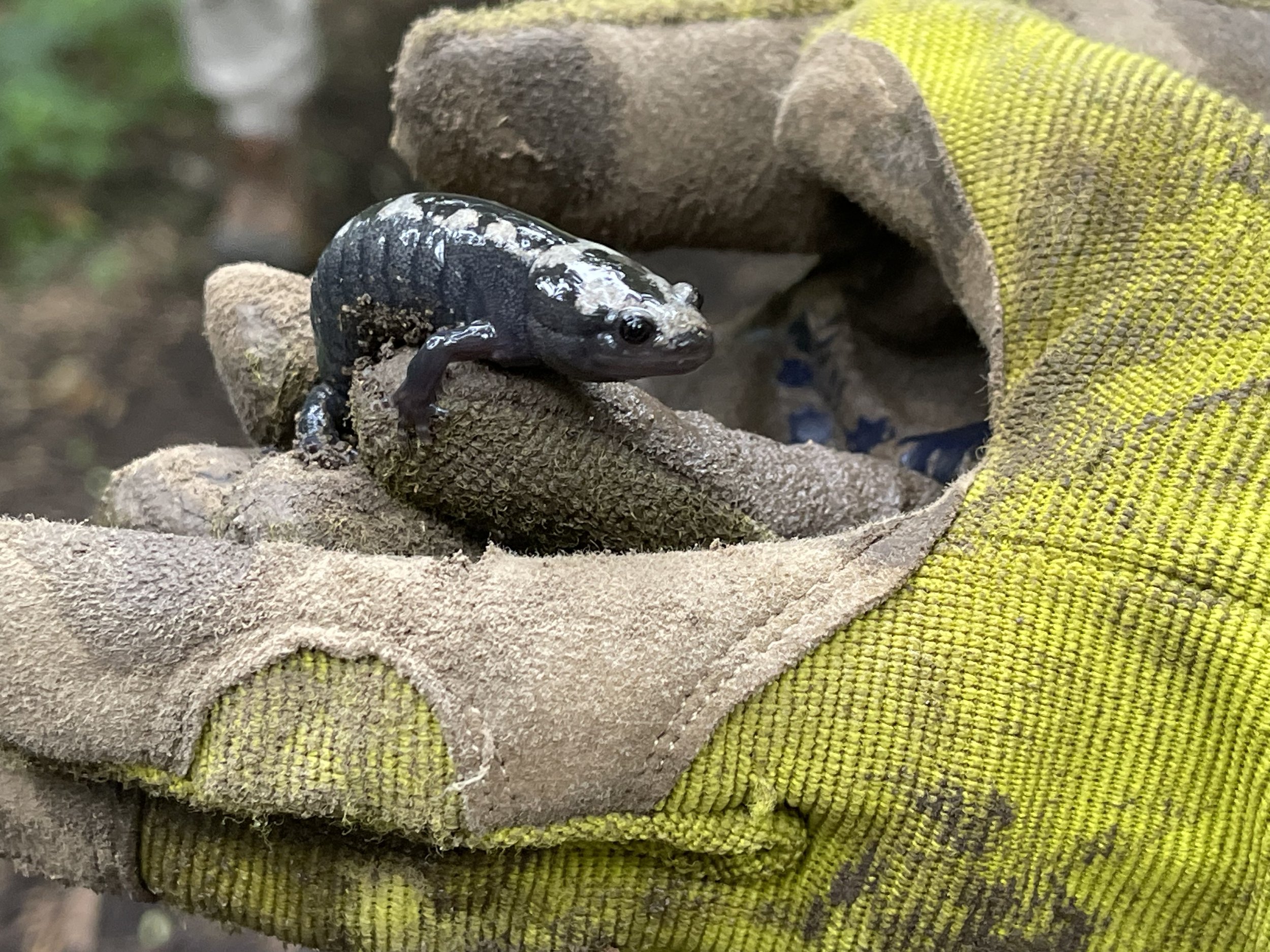NATURAL RESOURCES
As one of the largest tracts of old-growth forest in an urban area with over 100,000 people, Wesselman Woods is unlike other forests in the state of Indiana. Wesselman Woods is a bottomland forest with pockets of vernal pools in the spring and fall.
The urban ecology of Wesselman Woods is unique considering that we have mammals (coyotes, deer, bobcats, rodents, etc.), snakes (garter, king, black rat, etc.), turtles (painted and Eastern box), amphibians (salamanders, frogs, etc.), birds (turkey vultures, pileated woodpeckers, hummingbirds, etc.), and too many arthropods to count. Not many urban forests, especially urban old-growth forests, can boast this amount of diversity.
Apart from our wildlife, Wesselman Woods is home to trees older than the inception of the City of Evansville. Some of our Champion Trees can be found on Main Trail (White Oak, Shagbark Hickory, Blue Beech, Winged-Elm), on Boonville Trail (Biltmore Ash & Chinquapin Oak), and on Mini-Loop Trail, you’ll find the largest Tulip tree in the county. There is also a champion sweetgum tree just outside of Wessleman Woods in Wesselman Park – keep your eyes open for it!
As an Indiana State Nature Preserve and National Natural Landmark, our trails offer visitors the opportunity to experience what Indiana forests looked like about 400 years ago. We strive to conserve, protect, and steward this land for future generations to come. As a State Nature Preserve, state laws are enforced here. Wesselman Woods is a special place, very old and irreplaceable. Please observe the following rules.
Pets are not permitted on trails.
Diseases might be transmitted between pets and wildlife.
Stay on trails.
Trampled plants and wildflowers often die. Poison ivy and wood nettle are common – avoid them by keeping to marked trails only.
Bicycles and motorcycles are not permitted.
They destroy footpaths. They also disturb hikers and wildlife. Please leave all such vehicles in the bike rack or parking lot.
No jogging.
Jogging disturbs hikers and wildlife.
No harvesting.
All plants, fungi, animals, and minerals are protected here. Take nothing with you and leave nothing behind.
Field Guides
A field guide is a book or brochure that helps you identify flora (plant life) and fauna (animals). Below, we have a collection of field guides dedicated to the various flora and fauna of Wesselman Woods and more! Use these guides to make your hikes through the forest more fun.
These guides are created by the staff and volunteers at Wesselman Woods. Please do not copy, reproduce, or share these guides or images without permission. To obtain permission, contact our office via email.
HOWELL WETLANDS
Howell Wetlands is our off-site property on the west side of Evansville. This is one of the largest urban wetlands in Indiana. This rare ecosystem is an appealing year-round location for education and enjoyment. The 35-acre property includes a variety of habitats, including a marsh, slough, and remnant river oxbow.
Being in the center of suburbia, it is incredible to witness all the biodiversity at Howell Wetlands. Bald cypress trees tower over the wetlands – interspersed with oak and maple trees. Beavers have made Howell Wetlands their home – check out the number of lodges at Howell. Cranes, migrating birds, coyotes, bobcats, raccoons, and possums can all be spotted at Howell Wetlands.
In order to maintain this rare ecosystem, we please ask that the following rules be followed at Howell Wetlands.
Foot traffic only.
No bicycles or mechanized vehicles are allowed. Jogging is also prohibited. These activities disturb hikers and wildlife. Strollers are permitted if kept on the trail.
Stay on designated trails.
Off-trail hiking results in significant damage to the plants and animals that live on the forest floor.
Pets are permitted in the wetlands.
Pets are permitted but must remain on a leash at all times.
No harvesting.
Please leave all rocks, feathers, leaves, bones, etc. in place for the enjoyment of future visitors and the continued health of the ecosystem.
No fishing.
Fishing is not permitted at Howell Wetlands.
No swimming or wading.
Please stay on the boardwalks and trails at all times.
Smoking is not permitted.
Please extinguish all items before entering the property.
Feeding wildlife is prohibited.
Please enjoy the animals from a safe distance. Feeding animals human food is detrimental to the health of those animals.
Do not litter.
Litter lessens the quality of the outdoor experience for everyone, and can be a hazard to wildlife. If you would like to pick up litter along your hike, bring a trash bag with you.
RESEARCH OPPORTUNITIES
We encourage and invite researchers to study and teach us, Evansville, and the academic community about our urban ecosystems.
If you are interested in pursuing research at Wesselman Woods, Howell Wetlands, or our Nature Playscape, visit our Research page or contact our Director of Natural Resources and Research.
THANK YOU
We would like to express our sincere gratitude to the organizations and individuals who make our research and conservation efforts a possibility.
Lochmueller Group
Evansville Audubon Society
Eagle Scouts
Sherwin Williams
Sunbelt Rentals
University of Evansville
University of Southern Indiana






